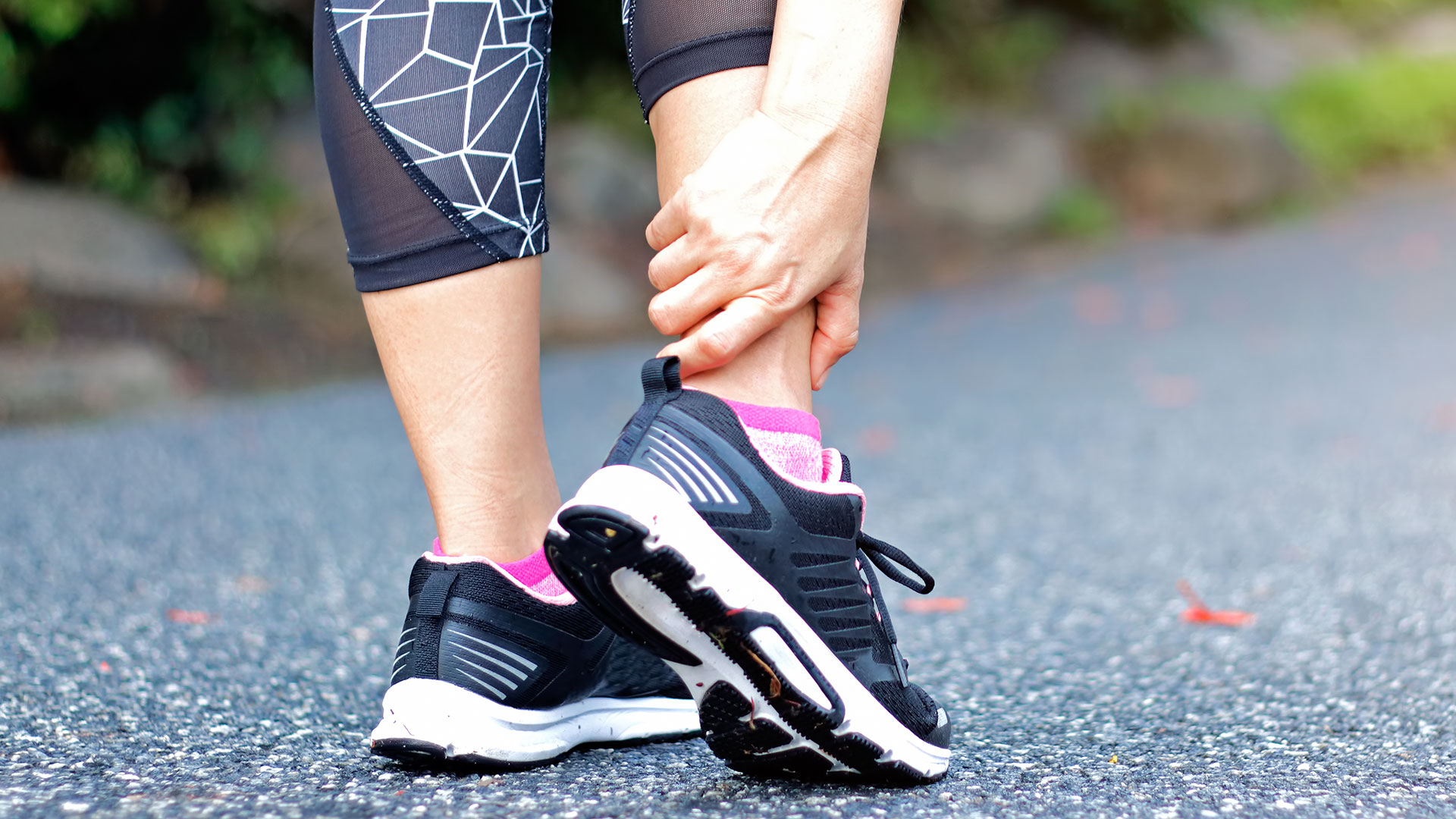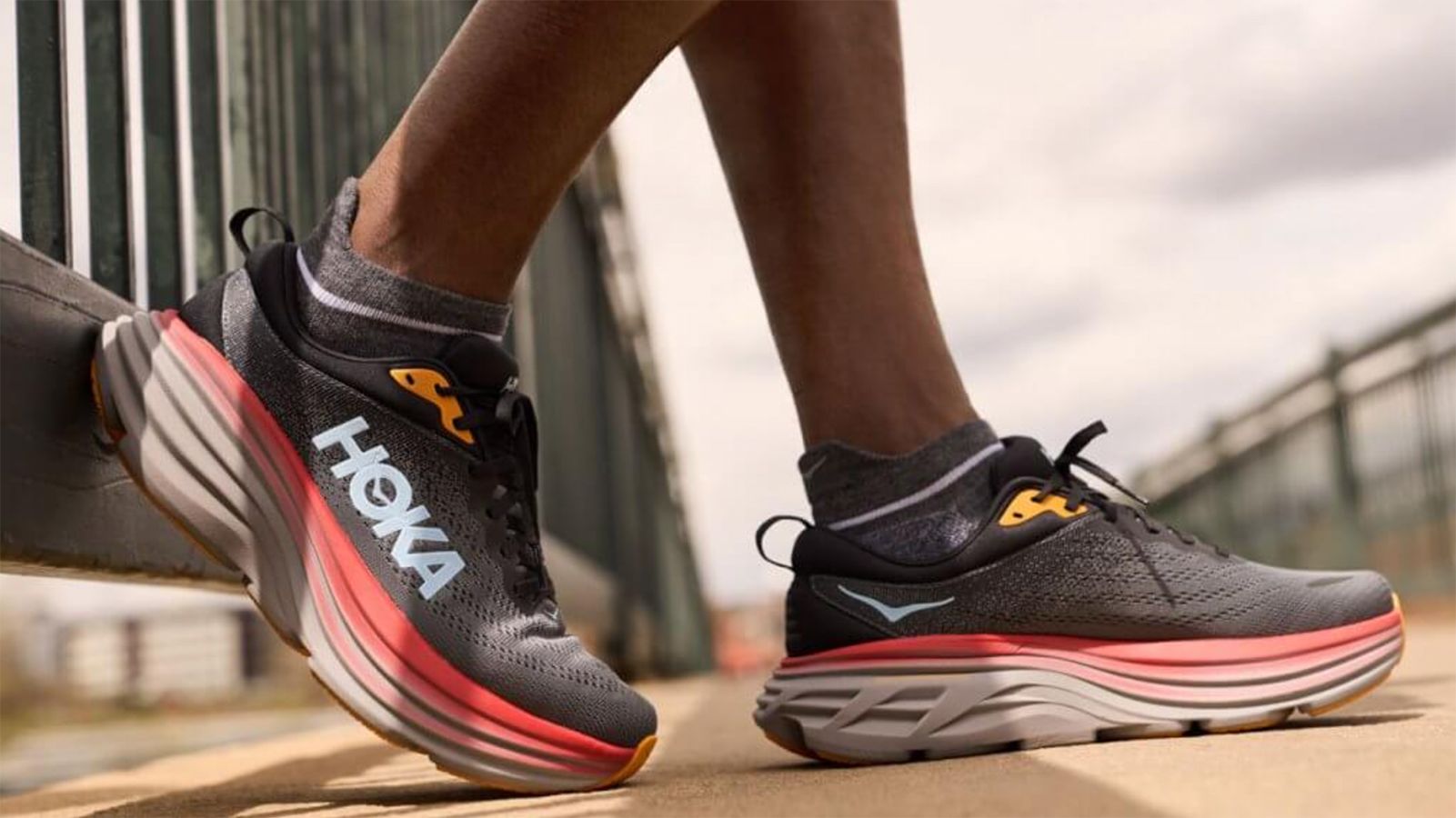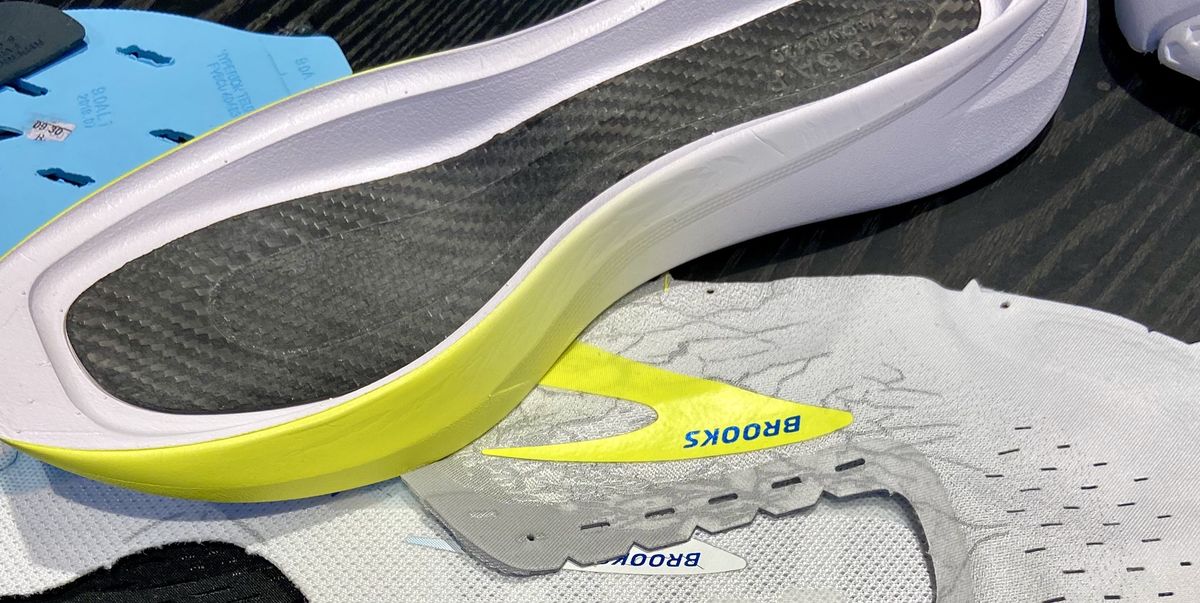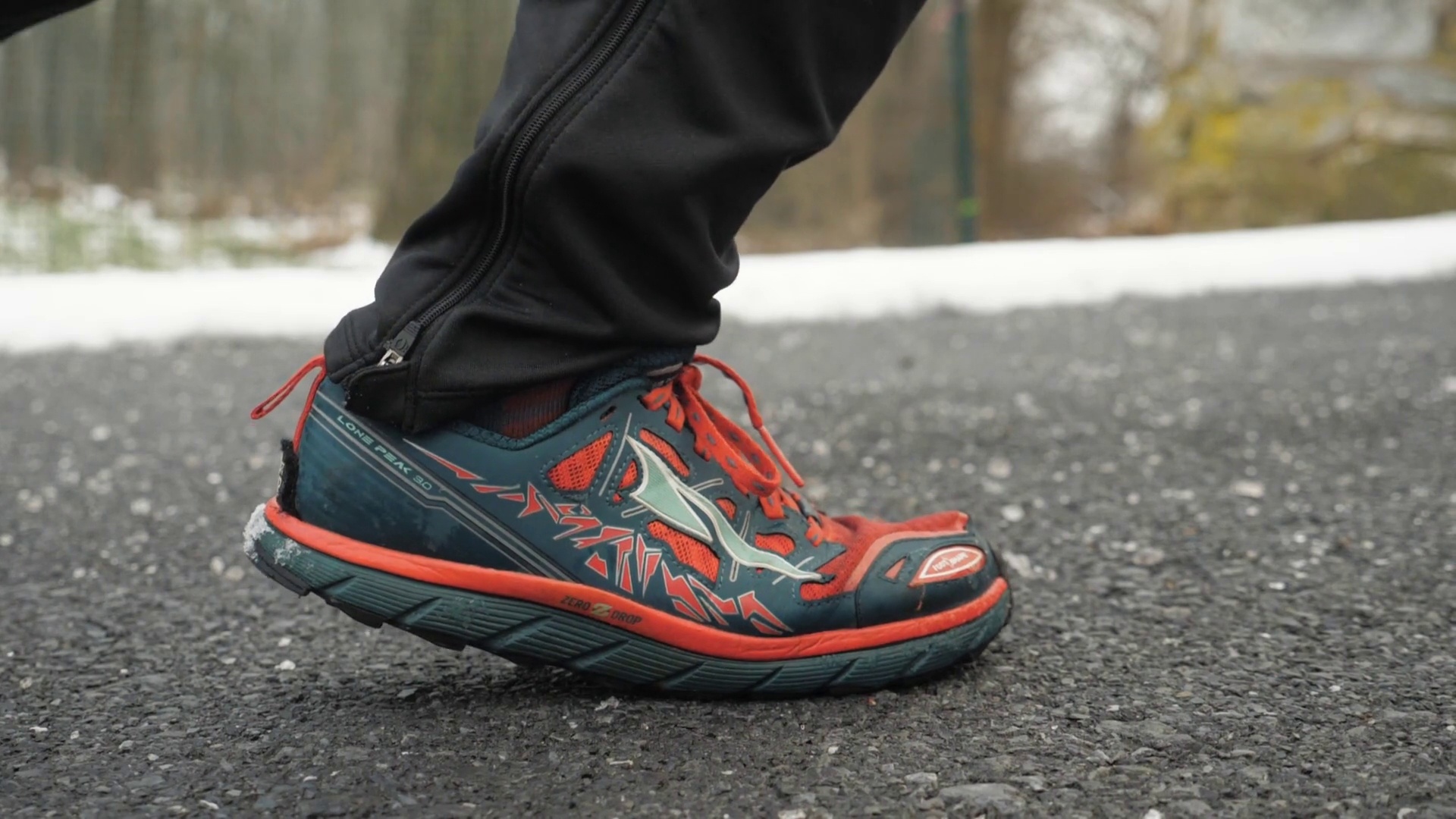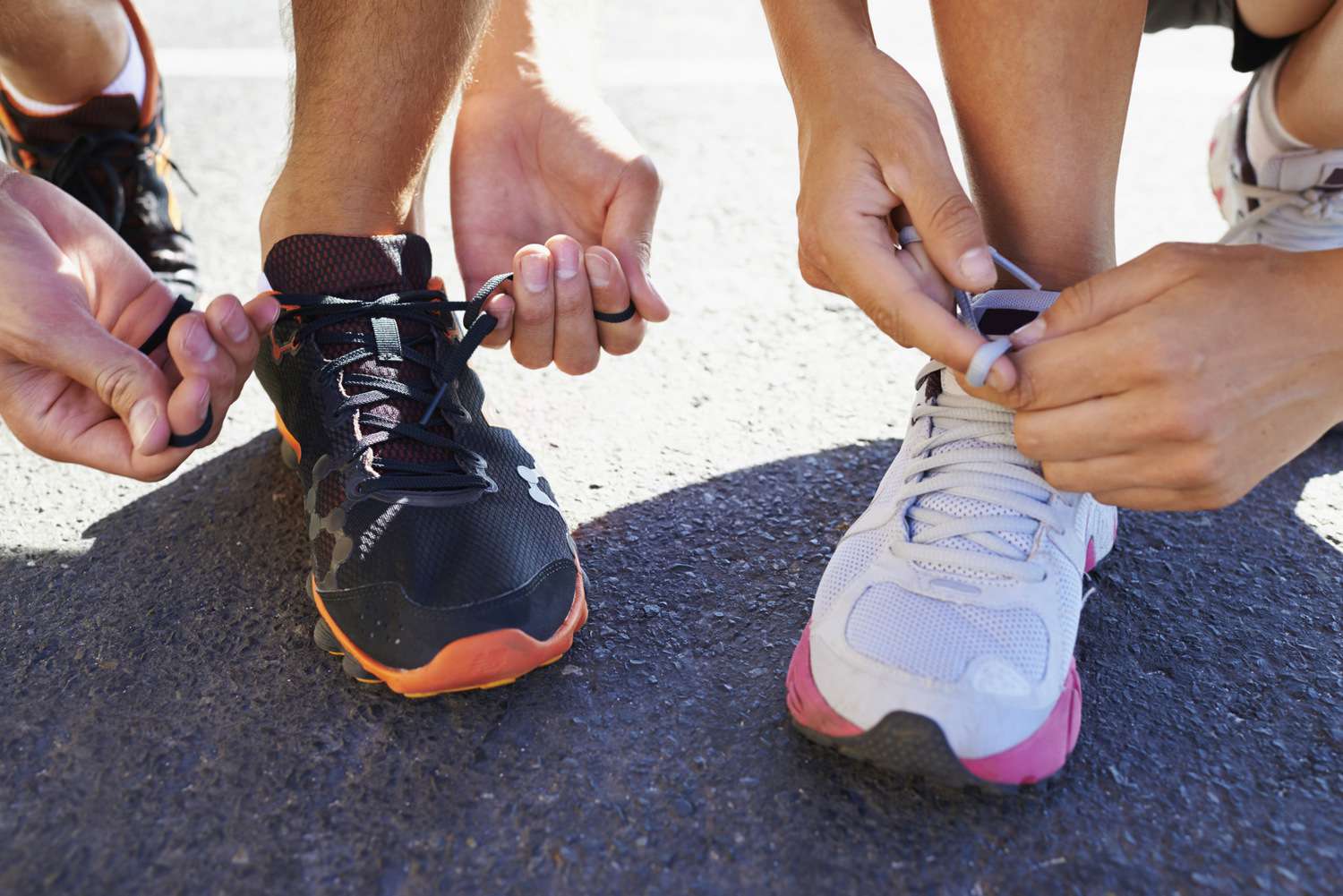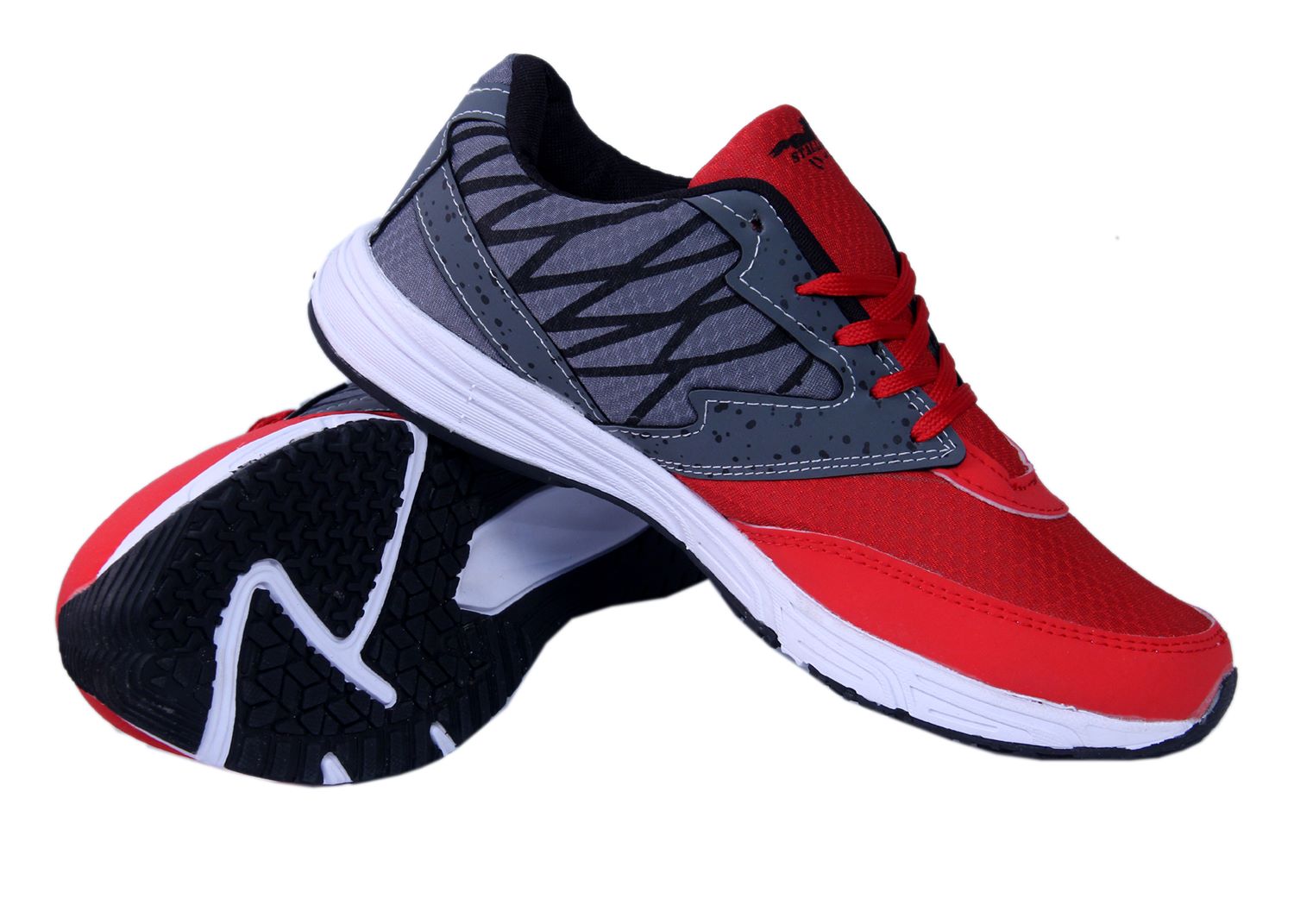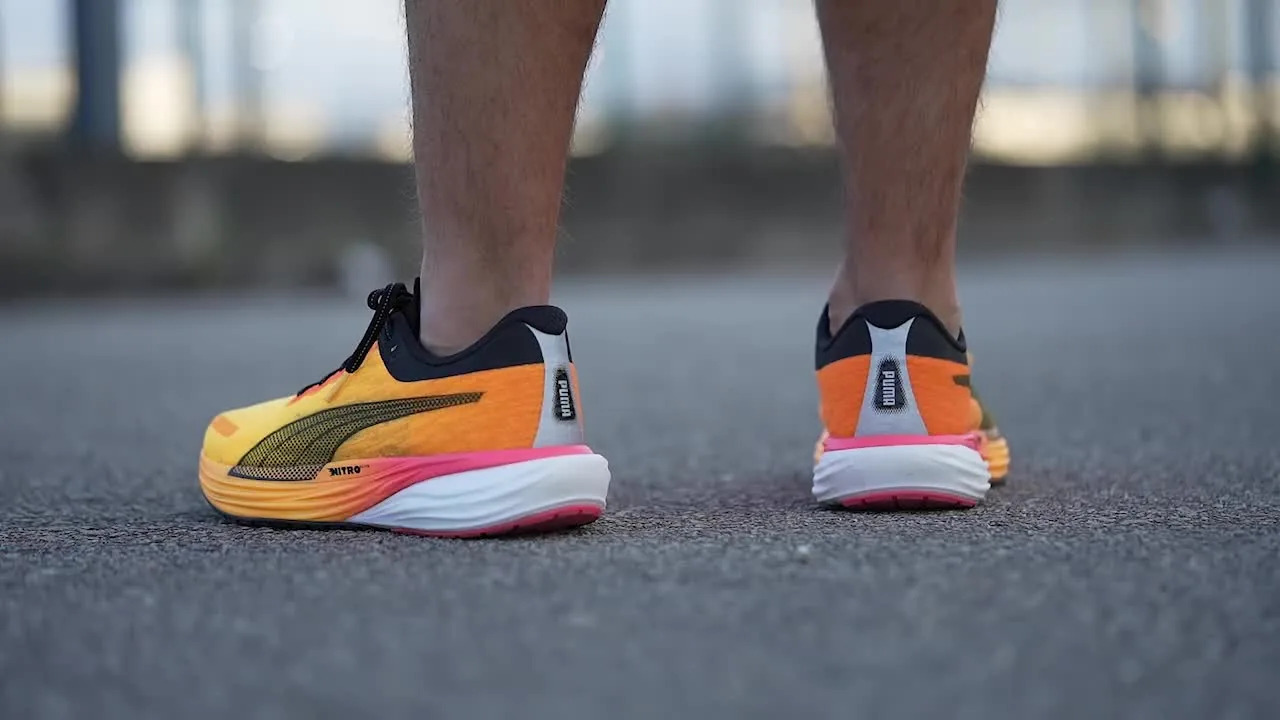Home>Misc>Featured>How Do I Know If I Need Wide Running Shoes
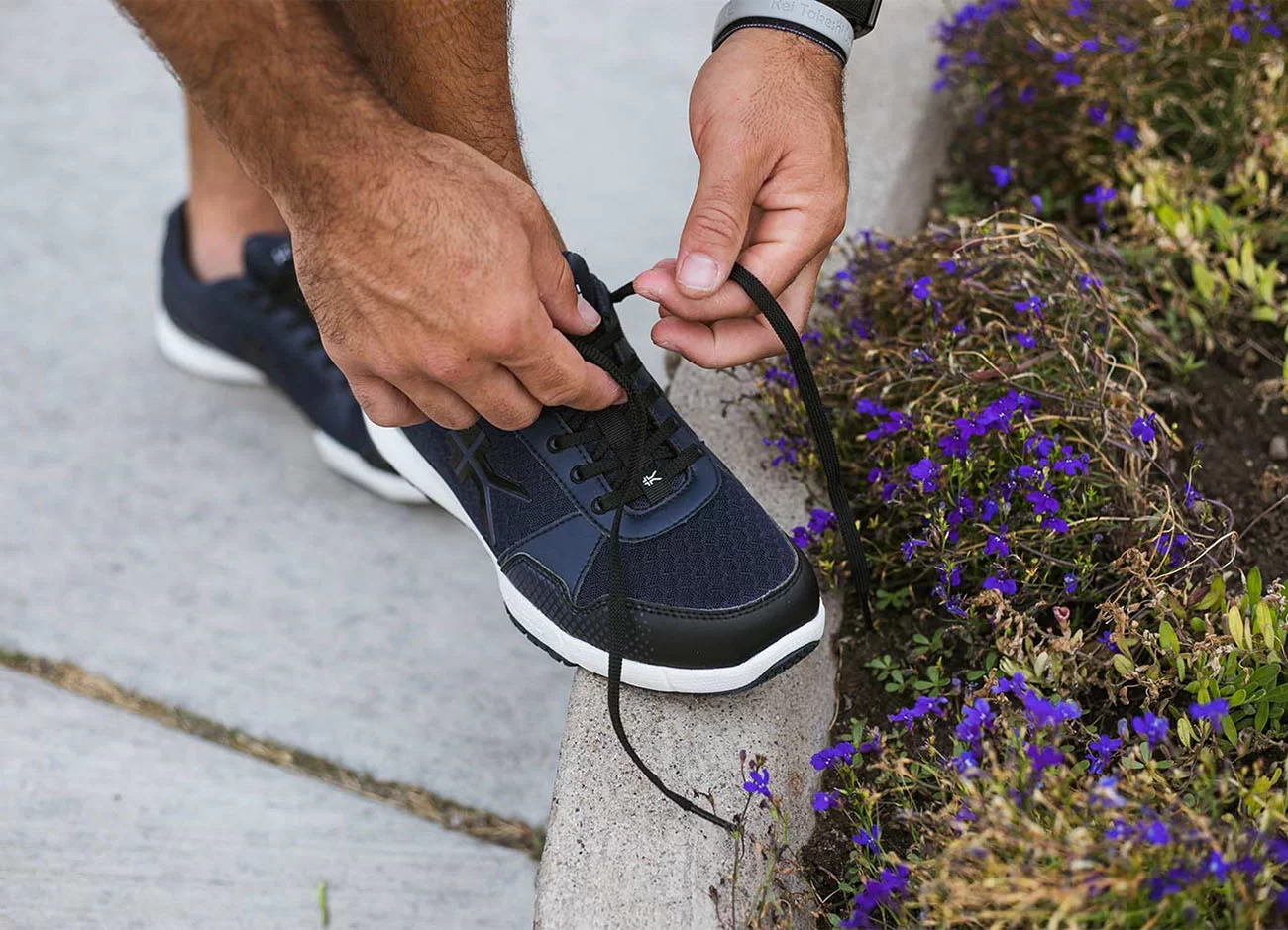

Featured
How Do I Know If I Need Wide Running Shoes
Modified: January 22, 2024
Discover if you require wide running shoes with our expert guide. Explore our featured selection for the perfect fit.
Introduction
Choosing the right running shoes is crucial for both seasoned runners and beginners alike. Finding a pair that fits properly can make all the difference in your performance, comfort, and even injury prevention. One important factor to consider is the width of the shoes you choose. While many people may assume that width is a minor detail, it can actually have a significant impact on your running experience.
When it comes to running shoes, one size does not fit all. Every individual has unique feet, and understanding your foot width is essential for finding the perfect fit. In this article, we will dive into the world of wide running shoes and explore how to determine if they are right for you.
The width of your feet can vary due to factors like genetics, foot structure, and even age. Some people naturally have wider feet, while others have narrower feet. If you find that regular running shoes feel too tight or uncomfortable, it may be an indicator that you need wide running shoes. Ignoring the width of your shoes can lead to foot pain, blisters, and even more serious injuries over time.
Fortunately, there are a number of signs that can help you determine if you need wide running shoes. Keep in mind that it’s always best to consult with a podiatrist or a fitting specialist to ensure an accurate assessment, but by paying attention to your body’s cues, you can gain valuable insights into your specific footwear needs.
Before we delve into the signs and benefits of wide running shoes, let’s take a moment to understand what precisely constitutes the width of a shoe. The width of a shoe is measured horizontally at the ball of the foot, typically denoted using the letters A (narrowest), B (standard), C (wide), and D (extra wide). For the purpose of this article, we will focus on C and D widths, which are commonly referred to as wide running shoes.
Importance of Proper Running Shoes
Proper running shoes play a vital role in ensuring a comfortable and injury-free running experience. Whether you are a dedicated marathon runner or someone who enjoys occasional jogs, wearing the right shoes can make all the difference in your performance and overall foot health.
When you run, your feet endure a significant amount of impact and stress. The right pair of running shoes can provide the necessary support and cushioning to absorb shock, reducing the risk of injuries such as sprained ankles, shin splints, and stress fractures. They also help to distribute the pressure evenly across your feet, minimizing discomfort and preventing the development of painful conditions like plantar fasciitis.
In addition to injury prevention, wearing appropriate running shoes can enhance your running efficiency. They are specifically designed to provide stability and improve your biomechanics, allowing for a more natural and efficient stride. This means you can run longer and faster with less effort and fatigue.
One often overlooked aspect of running shoes is their impact on your overall posture and alignment. When your feet are properly supported, it helps to maintain the overall alignment of your body, from your feet to your knees, hips, and back. This can reduce the risk of developing postural issues and chronic pain in the long term.
It is important to note that wearing the wrong type of shoes, including those that are too narrow or too wide, can have detrimental effects on your running experience. Shoes that are too narrow can cause friction, blisters, and discomfort, while shoes that are too wide can lead to instability and lack of support.
Considering the importance of proper footwear in running, it is crucial to understand your specific foot width and invest in running shoes that accommodate that width. Wide running shoes are specifically designed for individuals with wider feet, providing ample space and support for optimal performance and comfort.
Now that we understand the significance of proper running shoes and the role they play in ensuring a safe and comfortable running experience, let’s explore the signs that indicate you may need wide running shoes.
Understanding Foot Width
Foot width refers to the horizontal measure across the ball of your foot, which is the widest part. It is an important factor to consider when choosing running shoes as it determines how well the shoe will fit and support your foot.
The width of your foot can vary from person to person and can be influenced by factors such as genetics, foot structure, and age. Some people naturally have wider feet, while others have narrower feet. Understanding your foot width is essential to finding running shoes that provide the right fit and support.
Shoe manufacturers typically offer different width options to accommodate varying foot sizes. The most common widths are narrow (A), standard or medium (B), wide (C), and extra wide (D). Wide running shoes, denoted by the letter C, are designed to provide more room in the toe box and midfoot areas, accommodating individuals with wider feet.
It is important to note that foot width is not always directly related to shoe size. Two people with the same shoe size can have different foot widths. Therefore, relying solely on shoe size may not guarantee the best fit and comfort.
To determine your foot width, you can consult a podiatrist or use a simple measurement technique at home. Start by standing barefoot on a piece of paper or a flat surface. Place a ruler or measuring tape horizontally across the widest part of your foot, which is usually around the ball of your foot. Take note of the measurement in centimeters or inches.
Once you have your foot width measurements, you can compare them to the sizing chart provided by shoe brands. This will help you identify the appropriate width category for your feet and guide your selection of wide running shoes.
Understanding your foot width is crucial because wearing shoes that are too narrow can cause discomfort, pinching, and even lead to foot problems like bunions or corns. On the other hand, wearing shoes that are too wide can result in reduced stability and potential foot slippage, affecting your overall running experience.
Now that we have a better understanding of foot width and how it relates to running shoes, let’s explore the signs that indicate you may need wide running shoes.
Signs You Might Need Wide Running Shoes
While foot width can vary widely from person to person, there are several signs that indicate you might need wide running shoes. Paying attention to these signs can help you determine if your current running shoes are too narrow and if it’s time to consider switching to wide running shoes.
One of the most obvious signs is feeling discomfort or tightness in the toe box area of your running shoes. If your toes feel cramped or squeezed together, it is an indication that the shoes may not be providing enough width to accommodate your feet comfortably.
Another sign to watch out for is the presence of blisters, calluses, or hot spots on your feet after running. These issues can arise when your shoes are too narrow and cause friction against the skin. Wide running shoes can provide the necessary space to reduce rubbing and prevent the formation of painful abrasions.
If you notice that your feet tend to feel fatigued or achy after running, it could be a sign that your shoes are not providing adequate support. Wide running shoes can offer additional stability and cushioning, helping to distribute pressure and absorb impact more effectively.
Pay attention to any numbness or tingling sensations in your toes while running. This can be an indication that your shoes are too tight and restricting proper blood circulation. Wide running shoes can alleviate these issues by providing a more generous toe box area.
Keep in mind that foot width can also change over time, particularly as we age or due to weight fluctuations. If you have noticed that your regular running shoes, which used to fit comfortably, now feel snug or constricting, it might be a sign that your foot width has increased and you need wider shoes.
It is important to address these signs promptly as running in shoes that are too narrow can lead to pain, discomfort, and potential foot injuries. Investing in wide running shoes that cater to your foot width can significantly improve your running experience and help prevent long-term foot problems.
Now that we have explored the signs that indicate you might need wide running shoes, let’s move on to the benefits that these shoes can offer.
Benefits of Wide Running Shoes
Choosing wide running shoes can offer a range of benefits for individuals with wider feet. These shoes are specifically designed to provide the necessary space and support, ensuring a comfortable and optimal running experience. Here are some key benefits of wearing wide running shoes:
- Enhanced Comfort: Wide running shoes offer more room in the toe box and midfoot areas, allowing your feet to spread naturally during a run. This extra width helps to prevent discomfort, pinching, and rubbing, reducing the likelihood of blisters, calluses, and hot spots.
- Improved Stability: Wide running shoes provide a wider base of support, promoting better balance and stability while running. This can be especially beneficial for runners with wider feet, as it helps to minimize the risk of foot slippage and potential injuries.
- Reduced Foot Fatigue: Wide running shoes offer ample space for your feet to move and flex, reducing the strain and fatigue that can occur from being trapped in narrow shoes. By allowing your toes to splay naturally, wide running shoes can improve overall foot comfort and reduce the likelihood of foot cramps or muscle fatigue.
- Improved Blood Circulation: Wearing shoes that are too narrow can impede proper blood circulation, leading to numbness or tingling sensations. Wide running shoes provide a more generous toe box area, allowing for better blood flow and reducing the risk of discomfort or foot-related issues caused by poor circulation.
- Customizable Fit: Wide running shoes often come with adjustable features such as laces, straps, or overlays that allow you to fine-tune the fit to your specific foot width. This customization ensures a secure and individualized fit that maximizes your comfort and performance.
- Increased Durability: The wider design of these shoes typically means that they have reinforced materials and construction, enhancing their overall durability and longevity. This is important for runners who put their shoes through regular wear and tear.
By understanding the benefits of wide running shoes, you can make an informed decision when selecting footwear that caters to your specific foot width. Now, let’s move on to the next section, where we’ll explore how to measure your foot width accurately.
How to Measure Your Foot Width
Accurately measuring your foot width is essential when determining if you need wide running shoes. By following these simple steps, you can measure your foot width at home:
- Gather the necessary tools: You will need a ruler or measuring tape, a piece of paper larger than your foot, and a pen or pencil.
- Prepare your foot: Remove your shoes and socks to ensure accurate measurements.
- Place the paper on a flat surface: Find a hard, flat surface where you can place the paper. This will provide a stable base for measuring your foot width.
- Stand on the paper: Step onto the paper, ensuring that your weight is evenly distributed. Keep your foot relaxed and avoid tensing your toes or arch.
- Trace the outline of your foot: Use the pen or pencil to carefully trace the outline of your entire foot. Make sure to keep the pen or pencil upright and in constant contact with the paper.
- Measure the width: Now that you have traced your foot, use the ruler or measuring tape to measure the widest part of your foot. This is typically around the ball of your foot.
- Record your measurement: Take note of the measurement in either centimeters or inches. This will serve as your foot width measurement.
Remember, it’s important to measure both feet as slight differences in width between the left and right foot are common. Use the measurement of the wider foot when determining your foot width category.
Once you have your foot width measurement, refer to the sizing chart provided by your chosen shoe brands. Keep in mind that shoe sizes may vary across brands, so it’s always best to consult the specific sizing information provided by the manufacturer.
By accurately measuring your foot width, you can ensure a proper fit and select wide running shoes that accommodate your specific needs. In the next section, we’ll discuss how to try on and fit wide running shoes correctly.
Trying on and Fitting Wide Running Shoes
Once you have determined that you need wide running shoes, it’s important to try them on and ensure a proper fit. Here are some tips to help you when trying on and fitting wide running shoes:
- Shop at specialized stores: Look for running shoe stores or specialty retailers that offer a wide range of shoe widths. These stores typically have knowledgeable staff who can assist you in finding the right size and fit.
- Bring your own socks: When trying on wide running shoes, wear the same type of socks that you plan to wear while running. This will give you a more accurate representation of the fit and feel.
- Try both shoes on: Put on both the left and right shoes and lace them up properly. This will allow you to assess the fit and comfort of each shoe individually.
- Walk and jog around: Take a short walk or jog around the store to get a feel for the shoes. Pay attention to any areas of discomfort or tightness.
- Check the toe box: Ensure that there is enough room in the toe box for your toes to move freely. You should be able to wiggle your toes comfortably without them feeling cramped.
- Assess the overall fit: Consider how the shoes feel across the width of your foot. They should feel snug but not overly tight. Avoid shoes that squeeze or constrict your foot.
- Check for stability and support: Wide running shoes should offer stability and support, especially in the midfoot and heel areas. Make sure that your foot feels secure and that the shoes provide adequate arch support.
- Walk on different surfaces: If possible, test the shoes on various surfaces such as carpet, tile, or a treadmill. This can give you a better idea of their performance and comfort in different conditions.
- Consult with an expert: If you’re unsure about the fit or need further assistance, don’t hesitate to ask for help from a fitting specialist or store staff. They can provide valuable insights and recommend the best options for your foot width.
Remember, finding the right pair of wide running shoes may require trying on multiple brands and styles. Trust your comfort and instinct when making the final decision.
Now that you know how to try on and fit wide running shoes correctly, let’s explore where you can purchase them.
Where to Buy Wide Running Shoes
When it comes to purchasing wide running shoes, you have several options available to ensure you find the perfect fit and style. Here are some recommended places to buy wide running shoes:
- Specialty Running Stores: These dedicated running shoe stores often carry a wide selection of shoes, including different widths. The staff is knowledgeable and can help guide you towards the best options for your specific foot width and running needs. They may also offer fitting services to ensure the perfect fit.
- Online Retailers: Many online retailers provide a wide range of running shoe options, including wide width options. Make sure to carefully read the product descriptions, reviews, and sizing charts to ensure you select the right size and width for your feet. Look for online retailers with good return policies in case the shoes don’t fit as expected.
- Manufacturer Websites: Visiting the official websites of well-known running shoe brands can be a great way to find wide running shoe options. Most brands will have a section specifically dedicated to their wide fit offerings, providing detailed information on the width options available.
- Sporting Goods Stores: Traditional sporting goods stores may have a selection of wide running shoes available, especially larger retailers. While they may not have the same level of specialized knowledge as dedicated running stores, they can still help you find wider width options and provide a range of other sports-related gear.
- Footwear Specialty Stores: Certain stores specialize in wider shoe options, catering to individuals with specific foot width needs. These stores typically carry a variety of shoe brands and models, including wide running shoes. It’s worth checking if there are any local footwear specialty stores in your area.
Regardless of where you choose to purchase wide running shoes, it’s essential to ensure they have a good return or exchange policy. This allows you to try on the shoes in the comfort of your home and return or exchange them if they don’t fit as expected.
It’s also worth noting that fit can vary between shoe models and brands, so don’t be afraid to try on different options within the wide width category to find the best fit for your feet.
Now that you know where to buy wide running shoes, it’s time to conclude our exploration of finding the perfect fit for your feet.
Conclusion
Choosing the right running shoes is essential for a comfortable and enjoyable running experience, and understanding your foot width is a crucial factor in finding the perfect fit. Wide running shoes are designed to accommodate individuals with wider feet, providing ample space and support.
By paying attention to the signs that indicate you might need wide running shoes, such as discomfort, blisters, or foot fatigue, you can make an informed decision to switch to wide width options. Additionally, measuring your foot width accurately and trying on various wide running shoe options can help you find the best fit.
Wide running shoes offer several benefits, including enhanced comfort, improved stability, reduced foot fatigue, and better blood circulation. These shoes allow your feet to move and flex naturally, preventing discomfort and potential foot problems.
When it comes to purchasing wide running shoes, you can explore specialty running stores, online retailers, manufacturer websites, sporting goods stores, and footwear specialty stores. Each option offers a range of wide running shoes to choose from, ensuring you find the right match for your feet.
Remember, finding the perfect pair of wide running shoes may take some trial and error, but it’s worth the effort to ensure a comfortable and enjoyable running experience. Take your time to measure your foot width accurately, try on different options, and seek guidance from fitting specialists when needed.
Now that you have the knowledge and understanding of wide running shoes, you can confidently embark on your next running adventure with footwear that suits your specific foot width. Happy running!
